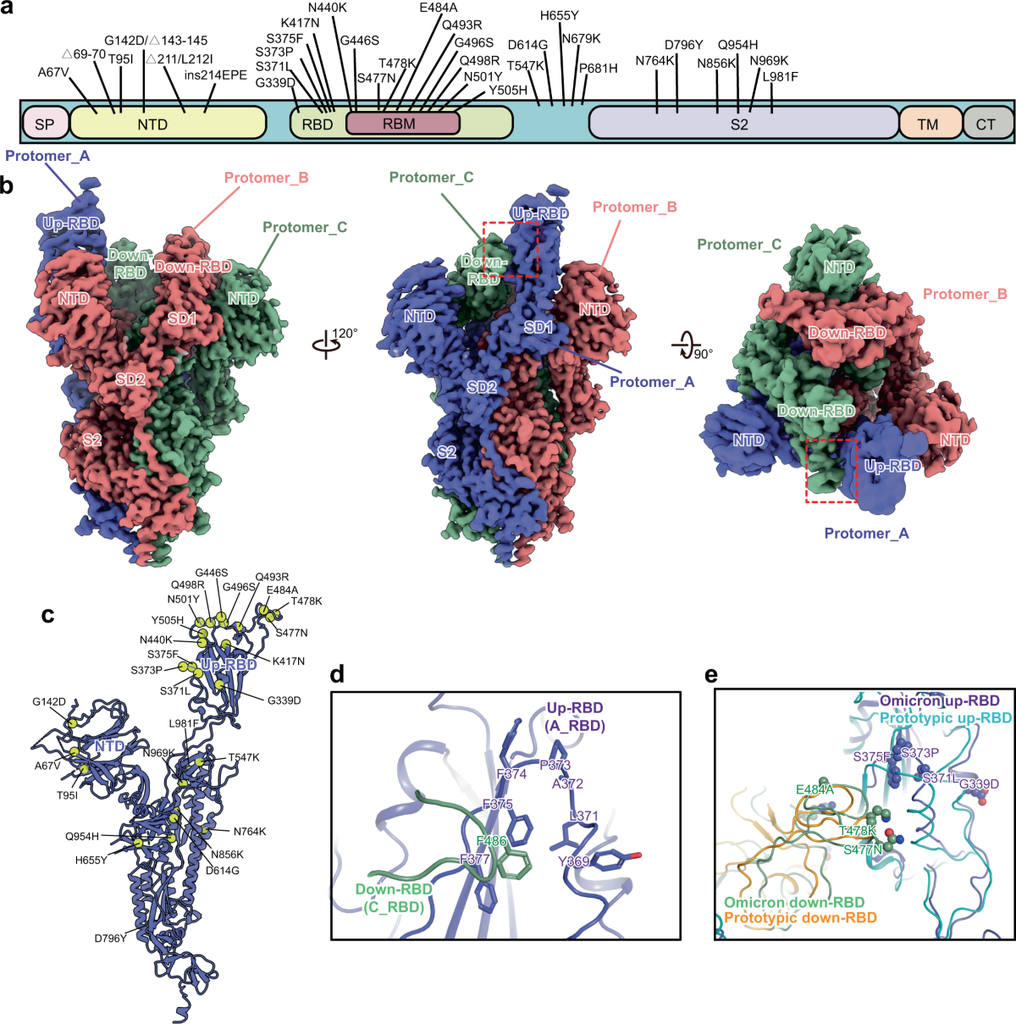SARS-CoV-2 JN.1 (Omicron) Spike S1+S2 trimer Protein (ECD, His Tag)(HPLC-verified), 100 µg
Catalog No :
CAS Number :
Brand :
In Stock
Specifications:
| Application | Protein Biology | ||
| Storage Temperature | –80°C | ||
| Product Type | Recombinant Protein | Forms | lyophilized powder |
| Product Brand | Sino Biologicals | ||
| Product Grade | Molecular Biology | ||
The spike (S) glycoprotein of coronaviruses contains protrusions that will only bind to certain receptors on the host cell. Known receptors bind S1 are ACE2, angiotensin-converting enzyme 2; DPP4, dipeptidyl peptidase-4; APN, aminopeptidase N; CEACAM, carcinoembryonic antigen-related cell adhesion molecule 1; Sia, sialic acid; O-ac Sia, O-acetylated sialic acid. The spike is essential for both host specificity and viral infectivity. The term 'peplomer' is typically used to refer to a grouping of heterologous proteins on the virus surface that function together. The spike (S) glycoprotein of coronaviruses is known to be essential in the binding of the virus to the host cell at the advent of the infection process. It's been reported that SARS-CoV-2 (COVID-19 coronavirus, 2019-nCoV) can infect the human respiratory epithelial cells through interaction with the human ACE2 receptor. The spike protein is a large type I transmembrane protein containing two subunits, S1 and S2. S1 mainly contains a receptor binding domain (RBD), which is responsible for recognizing the cell surface receptor. S2 contains basic elements needed for the membrane fusion. S protein plays key parts in the induction of neutralizing-antibody and T-cell responses, as well as protective immunity. The main functions for the Spike protein are summarized as: Mediate receptor binding and membrane fusion; Defines the range of the hosts and specificity of the virus; Main component to bind with the neutralizing antibody; Key target for vaccine design; Can be transmitted between different hosts through gene recombination or mutation of the receptor binding domain (RBD), leading to a higher mortality rate.
Purity
- ≥ 95 % as determined by SDS-PAGE
- ≥ 90 % as determined by SEC-HPLC
- ≥ 90 % as determined by SEC-MALS.
Endotoxin
< 1.0 EU per μg of the protein as determined by the LAL method
Activity
Immobilized Recombinant Human ACE2 / Angiotensin-Converting Enzyme 2 Protein (Fc Tag) (Cat:10108-H05H) at 2 μg/mL (100 μl/well) can bind Recombinant SARS-CoV-2 JN.1 (Omicron) Spike S1+ S2 trimer Protein (ECD, His Tag) (Cat:40589-V08H59), the EC 50 is 10-30 ng/mL.
Protein Construction
A DNA sequence encoding the SARS-CoV-2 (JN.1) Spike S1+S2 (YP_009724390.1, with mutations ins16MPLF, T19I, R21T, L24del, P25del, P26del, A27S, S50L, H69del, V70del, V127F, G142D, Y144del, F157S, R158G, N211del, L212I, V213G, L216F, H245N, A264D, I332V, G339H, K356T, S371F, S373P, S375F, T376A, R403K, D405N, R408S, K417N, 0K, V445H, G446S, N450D, L452W, L455S, N460K, S477N, T478K, N481K, V483del, E484K, F486P, Q498R, N501Y, Y505H, E554K, A570V, D614G, P621S, H655Y, N679K, P681R, 4K, D796Y, F817P, A892P, A899P, S939F, A942P, Q954H, N969K, K986P, V987P, P1143L and furin cleavage site mutants) expressed with the bacteriophage T4 fibritin and a polyhistidine tag at the C-terminus. The mutations were identified in the SARS-CoV-2 variant (known as variant JN.1).
- Expressed Host: HEK293 Cells
- Species: SARS-CoV-2
- Predicted N Terminal: Val 16
Molecule Mass
The recombinant SARS-CoV-2 (JN.1) Spike S1+S2 consists of 1227 amino acids and predicts a molecular mass of 136.51 kDa. The molecular weight of this protein is around 534.8 kDa verified by SEC-MALS.FormulationLyophilized from a sodium citrate buffer system at pH 6.0.
Usually, 5 % - 8 % trehalose, mannitol and 0.01% Tween-80 are added as protectants before lyophilization.
Please refer to the specific buffer information in the hard copy of the datasheet.
Stability & Storage
Samples are stable for up to twelve months from date of receipt at -20℃ to -80℃. Store it under sterile conditions at -20℃ to -80℃. It is recommended that the protein be aliquoted for optimal storage. Avoid repeated freeze -thaw cycles.ReconstitutionA hardcopy of datasheet with reconstitution instructions is sent along with the products. Please refer to it for detailed information.




 0
0
